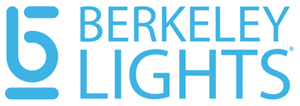Berkeley Lights
5858 Horton St, Suite 320
Emeryville, CA 94608 US
510-585-2855
Emeryville, CA 94608 US
510-585-2855

Company Overview
Berkeley Lights is a leading Digital Cell Biology company focused on enabling and accelerating the rapid development and commercialization of biotherapeutics and other cell-based products for our customers. The Berkeley Lights Platform captures deep phenotypic, functional and genotypic information for thousands of single cells in parallel and can also deliver the live biology customers desire in the form of the best cells.
